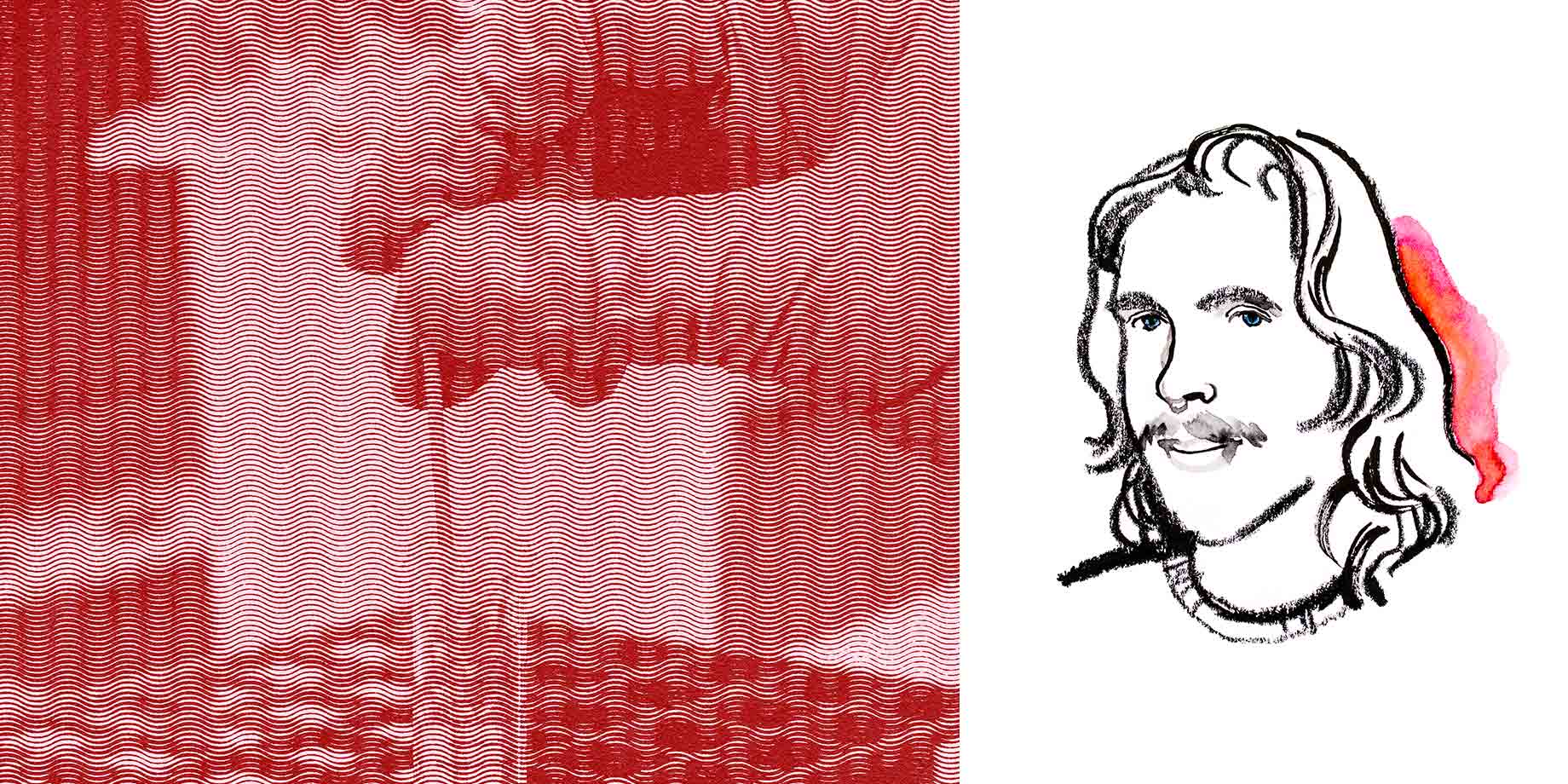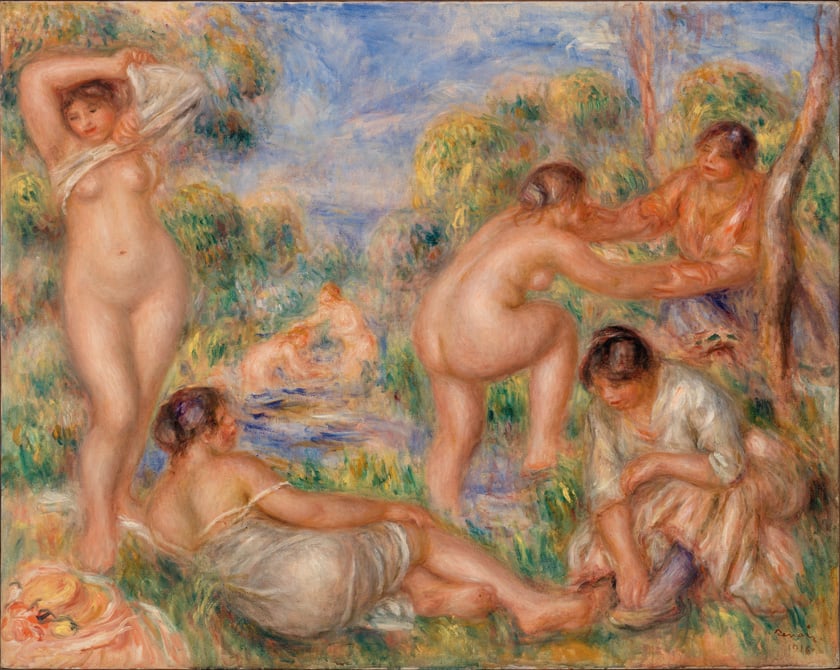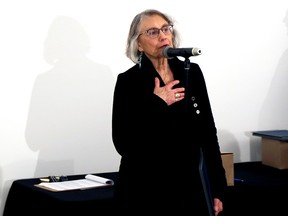Article content
Twenty-six years ago Mark Perry raised his hand at his son’s soccer practice and volunteered to fill in for the head coach the odd weekend — here and there — when needed.


In the age of climate change, feeling terrified for the future is the new norm. Forests burning down, cities flooding, even the sudden mothpocalypse in Vancouver—hopelessness seems to be the trend of the year. However, unreported by social media and the news, new technologies are being produced faster than ever, technologies that can totally redesign the world. Instead of cities living beside nature, cities could become a part of nature. A few weeks ago I watched an episode of the docuseries Abstract: The Art of Design that featured Neri Oxman, a bio-architect and professor at the MIT Media Lab. This lab is a glimpse into the most exciting future none of us thought would exist. A future that’s one with nature. A future that’s plastic-less, pollution-less and maybe even harmless.
The MIT Media Lab represents the perfect intersection of science, engineering, design, art, and nature. With a diverse team of artists and scientists, the lab is venturing into the unexplored field of bio-design: the design of objects inspired by nature. One example, Mushtari, is a 3D-Printed article of clothing filled with synthetic microorganisms that transforms sunlight into consumable sucrose. Another is Aguahoja, an art project that proposes a new, growable, biodegradable material that could someday be a replacement for plastic.
It blew my mind that neuroscience and biology are at the point where humans can grow structures. As Neri Oxman explains in the docuseries, humans are moving from nature-inspired design to design-inspired nature. I couldn’t believe people weren’t talking about this more. Immediately after watching the episode, I began research into bio-design firms within Canada. To both my surprise and disappointment, there isn’t a lot of bio-design present outside of the MIT Media Lab.
Throughout Canadian art history, nature has been the muse of several great artists such as Emily Carr and the Group of Seven. While nature has always played a vital role in inspiring the works of Canadian painters, the desire to save and preserve the environment has become a new inspiration for artists. Take musician Grimes’ latest album Anthropocene, Margaret Atwood’s novel MaddAddam, or Brett Story’s documentary The Hottest August. Each project with its own perspective delves into issues of climate change, either based in reality, fiction, or avant-garde fantasy.
In my own films, themes of climate change make it into every script. Even so, an issue for myself and many up-and coming-artists is feeling like we’re unable to incite real, physical change with the art we make. With clouds of wildfire smoke filling the skies, it’s hard for anyone to feel optimistic. In a world so uncontrollable and volatile, artists attempt protests, political works, films—but a true and radical change in society never occurs, leaving many hopeless.
If nature has historically been so important to the artists of Canada, why hasn’t bio-design—a beautiful collaboration of nature and art—been explored here? If humans, in theory, have the means to build inexpensive, organic—essentially utopian—structures and buildings, why haven’t we? I think the answer is a lack of communication between scientists, artists, designers, engineers, and in fact, all academic fields within Canada.
So if artists aren’t able to journey into bio-architecture, then what has the science department been doing in this regard? The answer: actually a lot. With programs like the Bachelors of Environmental Design and the BioProducts institute popping up at UBC, innovations are happening left and right. This past summer, using locally sourced wood fibers as the core material, the BioProducts Institute recently developed potentially the world’s first biodegradable N95 mask in the heat of a pandemic. But this is an art column, so, where can artists fit into this equation? The answer, I believe, is that artists should be a part of the equation, from start to finish.
My roommate Naomi is one of many design thinkers in the graphics-based IDEA program at Capilano University. In their final year, IDEA has all of its students submit a ‘capstone project,’ which is an opportunity for each student to find a social, political, or environmental issue and solve it through design. This can come in the form of books, apps, ad campaigns, and websites. Naomi is trying to solve the issue of nursing shortages, by inspiring more men to pursue nursing careers.
What these students do is impressive, but it’s hard not to think about what all these artists and designers could do if they were to collaborate with scientists, engineers, architects, and even neuro-surgeons. What if artists in all disciplines didn’t limit themselves to traditional art forms, what if they could begin to create art inspired by nature, by growing art pieces? And on the other end of the spectrum, what if scientists and engineers didn’t have to limit themselves to strictly practical applications of their studies?
The freedom to explore artistic modes of thought can create beautiful objects that communicate artistically with the human body, similar to Mushtari. Through a collaboration of science, engineering, designers, and artists, the potential for projects using just local wood fibers is huge. If artists embrace the nature around them and start hanging out with scientists, engineers and architects, maybe they could truly change the world now, when we need it most.
What’s the deal with Leonardo’s harpsichord-viola? Why were Impressionists obsessed with the color purple? Art Bitesbrings you a surprising fact, lesser-known anecdote, or curious event from art history. These delightful nuggets shed light on the lives of famed artists and decode their practices, while adding new layers of intrigue to celebrated masterpieces.
From Just Stop Oil to Free Palestine to P.A.I.N., recent times have seen art museums coopted as staging grounds for high-minded protest.
In 2015, however, the group of protesters that picketed outside Museum of Fine Arts in Boston had a simpler, less lofty target: Pierre-Auguste Renoir. Their demand? That museums remove his paintings from their walls. Their reasoning was rather straightforward: they argued Renoir was bad at art. (A protest at New York’s Metropolitan Museum of Art was soon to follow.)
The Renoir Sucks at Painting movement (if one can call it that) was the brainchild of Max Geller, and came to life after he encountered the sizable collection of Renoir paintings at Philadelphia’s Barnes Foundation. Its central outlet is an Instagram account that features close-ups of Renoir paintings accompanied by satirical, often long-winded critiques.
Armed with snobbish hipster fury and signage that read “God Hates Renoir,” “ReNOir,” and “We’re Not Iconoclasts, Renoir Just Sucks At Painting,” the group briefly received considerable media attention—though none from the institutions it was heckling. Fellow Renoir haters expressed their aesthetic sympathy online by posting photographs of themselves giving the middle finger to Renoir paintings, often accompanied with the hashtag #renoirsucksatpainting.


Renoir haters outside Boston’s Museum of Fine Arts. Photo: Lane Turner via Boston Globe
The furor prompted Renoir’s great-great-granddaughter Genevieve Renoir to chime in. She argued the free market had spoken clearly in favor of her ancestor’s talent. The market said something that sounded like, “$78 million at Sotheby’s for Bal du moulin de la Galette na na na-na na.” Geller responded by saying the free market lacked judgement and taste, citing TV commercials, climate change, and the destruction of sea otter habitats as evidence. Fair enough.
This points to the deeper purpose of Renoir Sucks at Painting, one that was generally lost beneath the media noise and pithy takedowns. Geller wasn’t trying to censor Renoir through ridicule. He was hoping to force museums into reconsidering the artistic merits of the paintings on their walls and make change, ideally in favor of non-white male painters. He called it “cultural justice.”


Pierre-Auguste Renoir, Bathing Group (1916). Courtesy of the Barnes Collection.
Though Geller’s approach was decidedly contemporary, his root sentiment wasn’t. People have long hated Renoir. The loathing has both moral and aesthetic substance. On moral grounds, Renoir’s innumerable dumb-faced, unflattering female nudes have seen him posthumously charged with sexism. Adding to the ignominy was his anti-Semitism, as shown by his stance in the Dreyfus affair.
And yet even the aesthetic charges are somewhat personal. Renoir, a ceramicist by training, fell in with a Parisian clique that included Alfred Sisley and Claude Monet, anti-academic artists who would become part of the Impressionist movement. Bold color and depictions of modern life were in. Formalism, florid rococo details, and grand mythological scenes were out.
The problem was, Renoir quite liked these old things—“I am of the 18th century,” he once said—and when times got financially tough, he backtracked and began painting saccharine, bourgeois portraits. It made him rich, an international star even. In short, he’s seen as a sellout.
Critics argue Renoir paid no attention to line or composition (he painted as though on a pot, the charge runs) and ignored the contemporary concerns of his day. Most damning, seemingly, is the accusation that Renoir’s paintings are pretty. Good art, of course, cannot simply be pretty.
One fan of Renoir’s pretty little paintings? Donald Trump. He claims to own Two Sisters (On the Terrace). It’s a fake, mind you.
Follow Artnet News on Facebook:
Want to stay ahead of the art world? Subscribe to our newsletter to get the breaking news, eye-opening interviews, and incisive critical takes that drive the conversation forward.


Twenty-six years ago Mark Perry raised his hand at his son’s soccer practice and volunteered to fill in for the head coach the odd weekend — here and there — when needed.
Advertisement 2
Article content
On Sunday, Perry accepted the Volunteer of the Year Award at the Owen Sound Arts, Culture and Volunteer Awards inside the Tom Thomson Art Gallery.
Article content
“It’s funny how things can evolve,” Perry said.
Owen Sound Minor Soccer registered more than 1,000 kids last summer, and even though Perry’s children have grown up he’s still the backbone and president of the steadily run organization, his nominators said.
Perry is the Rogers TV Grey County station manager and said his day job constantly reminds him of how important volunteers are to Owen Sound.
“I see it every day,” he said.

The Owen Sound Arts, Culture and Volunteer Awards celebrate excellence in the arts, culture and heritage in the greater Owen Sound area. This year, the celebration event included awards for Volunteer, Youth Volunteer, and Senior Volunteer of the Year.
Advertisement 3
Article content
Local poet, filmmaker and climate activist Elizabeth (Liz) Zetlin won the Lifetime Achievement Award for her decades of work promoting the arts and climate action in the region.
“Lifetime kind of sounds a little bit like you’re done, but I’ve still got a few years left,” said Zetlin, who used part of her acceptance speech to promote and recruit volunteers for her new venture Pollinate Owen Sound, in partnership with the OPEN team consisting of the Owen Sound and North Grey Union Public Library, Billy Bishop Museum, Waterfront Heritage Centre and the art gallery.
Zetlin helped create the city’s poet laureate position and the Words Aloud festival. More recently, she produced, directed and edited the documentary Resilience
Advertisement 4
Article content
Neyaashiinigmiing’s J.D. Crosstown earned the Emerging Artist award with a $500 cash prize. The singer/songwriter grew up in the Chippewas of Nawash Unceded First Nation with Cree and Ojibwe heritage. His music has roots in folk, country and blues and he’s fresh off a tour in Germany supporting local musician Matt Epp.

Raquell Yang won the Outstanding Individual Award. Originally from Taiwan, Yang is now a mainstay in the Owen Sound arts community where she mixes eastern and western styles in her brush paintings. She also supports the community with pop-up workshops and gallery events. Her best-known work is likely the impressive mural painted on the side of the Grey Gallery in downtown Owen Sound entitled Transformation.
Advertisement 5
Article content
The Georgian Bay School for the Arts won the Cultural Catalyst Award and Dean McLellan earned the Cultural Heritage Award for work restoring the Saugeen Amphitheater.
Sweetwater Music Festival won the award for Outstanding Group. The Emancipation Festival won the award for Outstanding Event, and the Owen Sound Memoir Series won the Most Promising New Event award.
Sandy Stevenson won Senior Volunteer of the Year while Junior Optimist Shayla Adamson won Youth Volunteer of the Year.
Musicians Magenta and Simon Dawes provided musical interludes throughout the ceremony.
More than 100 people attended the ceremony inside the TOM’s North Gallery. MPP Rick Byers, Mayor Ian Boddy and several city councillors attended.
Advertisement 6
Article content
Diana Meder from Grey-Bruce’s Bounce Radio was host for the ceremony. Performers from the Roxy Star Company opened the event.
To be eligible for an award, nominees had to live in the greater Owen Sound area and make a significant local contribution or a national/international impact.
Full-time city employees and elected officials are not eligible to be nominated, nor are posthumous nominations accepted.
The award’s jury is made up of previous event winners.

PAST WINNERS:
2022 winners:
Cultural Catalyst – Christy Eaglesham (Taylor)
Cultural Heritage – Potters Field Monument Volunteer Steering Committee
Outstanding Event – Georgian Bay Symphony Virtual Sessions
Outstanding Group – Reconciliation Garden Project
Advertisement 7
Article content
Outstanding Individual – Tyler Boyle, Spirit Artist
Emerging Artist – Paige Warner
Most Promising New Event – Earth Day Grey Bruce
Lifetime Achievement – Shirley John
2020 winners:
Cultural Catalyst – Community Foundation Grey-Bruce
Cultural Heritage – Wiidosendiwag+Walking Together+Marchons Ensemble Tour
Outstanding Event – Scenic City Film Festival
Outstanding Group – Lookup Theatre
Outstanding Individual – Stephanie Fowler
Emerging Artist – Kevin Griffin
Most Promising New Event – Owen Sound Art Walk
Lifetime Achievement – Wilmer Nadjiwon
2018 winners:
Cultural Catalyst – R. Michael Warren
Cultural Heritage – Maryann Thomas
Outstanding Event – 42nd Annual Summerfolk Music & Crafts Festival
Outstanding Group – Georgian Bay Symphony
Outstanding Individual – Steve Ritchie
Emerging Artist – Chris Morton
Most Promising New Event – Awesome Sydenham Riverfest Extravaganza
Lifetime Achievement – Stephen J. Hogbin
Article content
DJT Stock Plunges After Trump Media Files to Issue Shares
FFAW, ASP Pleased With Resumption of Crab Fishery – VOCM
Marjorie Taylor Greene won’t say what happened to her Trump Media stock
Javier Blas 10 Things Oil Traders Need to Know About Iran's Attack on Israel – OilPrice.com
Trump Media stock slides again to bring it nearly 60% below its peak as euphoria fades – National Post




In cutting out politics, A24 movie 'Civil War' fails viewers – Los Angeles Times
A Once-in-a-Generation Investment Opportunity: 1 Top Artificial Intelligence (AI) Stock to Buy Hand Over Fist in April … – Yahoo Finance
Real estate mogul concerned how Americans will deal with squatters: ‘Something really bad is going to happen’ – Fox Business
Comments